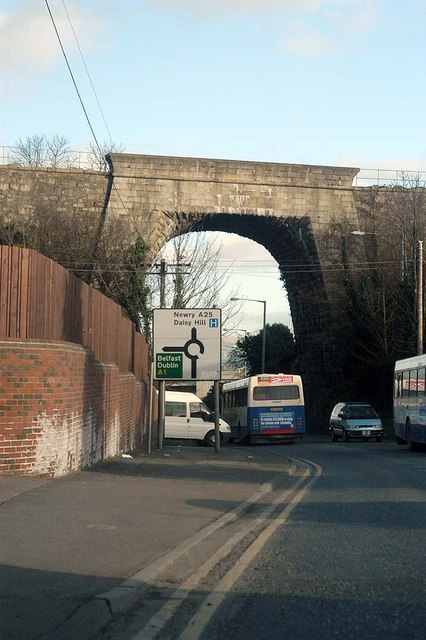MacNeill's Egyptian Arch on:
[Wikipedia]
[Google]
[Amazon]
 Macneill's Egyptian Arch is a
Macneill's Egyptian Arch is a
 Macneill's Egyptian Arch is a
Macneill's Egyptian Arch is a railway bridge
A bridge is a structure built to span a physical obstacle (such as a body of water, valley, road, or rail) without blocking the way underneath. It is constructed for the purpose of providing passage over the obstacle, which is usually someth ...
in Newry
Newry (; ) is a City status in Ireland, city in Northern Ireland, divided by the Newry River, Clanrye river in counties County Armagh, Armagh and County Down, Down, from Belfast and from Dublin. It had a population of 26,967 in 2011.
Newry ...
, Northern Ireland
Northern Ireland ( ga, Tuaisceart Éireann ; sco, label= Ulster-Scots, Norlin Airlann) is a part of the United Kingdom, situated in the north-east of the island of Ireland, that is variously described as a country, province or region. Nort ...
. Construction was completed in 1851 for the Dublin and Belfast Junction Railway Company and was the result of collaboration between engineer Sir John Macneill and constructor William Dargan
William Dargan (28 February 1799 – 7 February 1867) was arguably the most important Irish engineer of the 19th century and certainly the most important figure in railway construction. Dargan designed and built Ireland's first railway lin ...
. Locally known as the Egyptian Arch, the rail bridge passes over the Newry–Camlough
Camlough ( ; ) is a village five kilometres west of Newry in County Armagh, Northern Ireland. The village is named after a lake, known as Cam Lough, in the parish, which is about 90 acres in extent. South of the village is Camlough Mountain (Sli ...
Road, in the County Armagh
County Armagh (, named after its county town, Armagh) is one of the six counties of Northern Ireland and one of the traditional thirty-two counties of Ireland. Adjoined to the southern shore of Lough Neagh, the county covers an area of an ...
half of Newry.
It is located approximately 5 miles from the border between Northern Ireland and the Republic of Ireland
Ireland ( ga, Éire ), also known as the Republic of Ireland (), is a country in north-western Europe consisting of 26 of the 32 Counties of Ireland, counties of the island of Ireland. The capital and largest city is Dublin, on the eastern ...
on the Dublin–Belfast railway line. It is located less than 1 mile along the line from the 18 Arches viaduct, also known as the Craigmore Viaduct Craigmore may refer to one of the following places:
* Craigmore (hill), in the Trossachs, Scotland
* Craigmore, part of Rothesay, Isle of Bute, Scotland
* Craigmore, Nova Scotia, Canada
* Craigmore, South Australia
Craigmore is a large suburb ...
.
The Egyptian Arch gained its name from its resemblance to the ''nemes
Nemes were pieces of striped head cloth worn by pharaohs in ancient Egypt. It covered the whole crown and behind of the head and nape of the neck (sometimes also extending a little way down the back) and had lappets, two large flaps which hung ...
'' headdress worn by Ancient Egyptian pharaoh
Pharaoh (, ; Egyptian: '' pr ꜥꜣ''; cop, , Pǝrro; Biblical Hebrew: ''Parʿō'') is the vernacular term often used by modern authors for the kings of ancient Egypt who ruled as monarchs from the First Dynasty (c. 3150 BC) until the ...
s. The bridge was selected for the design of the £1 coin to represent Northern Ireland for 2006. All four of the bridge design pound coins for each constituent part of the UK were designed by wood engraver Edwina Ellis in a Royal Mint design competition.
The bridge was also the location of the Egyptian Arch Ambush of 13 December 1920.
References
{{Places of Interest in County Armagh Railway bridges in Northern Ireland Bridges in Northern Ireland Buildings and structures in County Armagh Newry Bridges completed in 1851 Grade B+ listed buildings Arch bridges in the United Kingdom 1851 establishments in Ireland